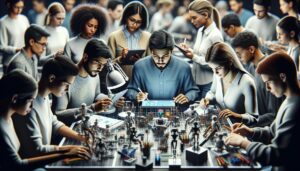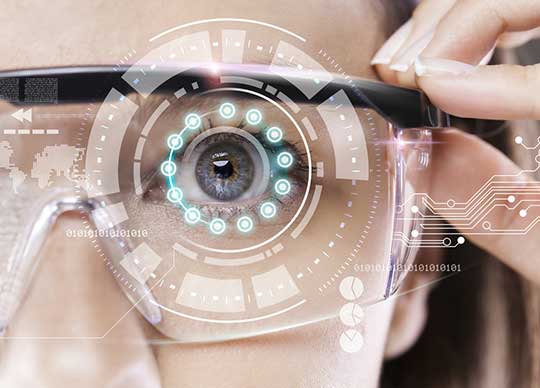Embracing the Tech Lifestyle How Technology Shapes Our Daily Lives
Tech Lifestyle
In 2025, technology is no longer just a tool—it’s a way of life. The tech lifestyle blends innovation with daily routines, transforming how we work, relax, connect, and even think. From smart homes that anticipate our needs to wearable devices that track our health, technology has become an invisible yet indispensable part of our existence. This article explores how embracing a tech lifestyle can enhance productivity, improve well-being, and create a more sustainable future. Let’s dive into the trends, tools, and practices defining this exciting era.
1. The Smart Home Revolution
Imagine waking up to a home that’s already prepared your morning coffee, adjusted the thermostat to your preferred temperature, and opened the blinds to let in just the right amount of sunlight. This isn’t science fiction—it’s the reality of smart homes in 2025. Devices like the Amazon Echo, Google Nest, and Apple HomePod have evolved into sophisticated hubs that integrate with everything from lights to security systems.
Smart home technology relies on the Internet of Things (IoT), where devices communicate seamlessly to simplify tasks. For example, smart thermostats like the Nest Learning Thermostat adapt to your schedule, reducing energy consumption while keeping you comfortable. Smart lighting systems, such as Philips Hue, allow you to customize ambiance with a tap on your phone or a voice command. These devices not only add convenience but also promote energy efficiency, aligning with sustainable living goals.
To adopt a smart home lifestyle, start small. Invest in a smart speaker or hub and pair it with compatible devices like plugs or bulbs. Over time, you can expand to include smart appliances, such as refrigerators that notify you when you’re low on groceries or ovens you can preheat remotely. The key is interoperability—ensure your devices work together through platforms like HomeKit or Alexa to create a cohesive ecosystem.
2. Wearable Tech: Your Personal Health Companion
Wearable technology has transformed from clunky fitness trackers to sleek, multifunctional devices that monitor everything from heart rate to stress levels. In 2025, devices like the Apple Watch Series 10, Fitbit Charge 6, and Oura Ring offer insights into your physical and mental health, making them essential for a tech-forward lifestyle.
These wearables do more than count steps. Advanced sensors track sleep patterns, blood oxygen levels, and even detect early signs of health issues like irregular heart rhythms. For instance, the latest Apple Watch can alert users to potential atrial fibrillation, while the Oura Ring provides detailed sleep analytics to optimize rest. This data empowers users to make informed decisions, whether it’s adjusting their diet, increasing exercise, or consulting a doctor.
Beyond health, wearables enhance productivity and connectivity. Smartwatches let you respond to messages, take calls, or control music without touching your phone. Some devices, like the Samsung Galaxy Watch, integrate with smart home systems, allowing you to adjust lights or check your front door camera from your wrist. To incorporate wearables into your tech lifestyle, choose a device that aligns with your goals—fitness, productivity, or both—and sync it with apps for a personalized experience.
3. Productivity Tools for the Digital Age
The tech lifestyle isn’t just about gadgets—it’s about working smarter. Productivity tools have become indispensable for managing time, tasks, and collaboration in 2025. Apps like Notion, Todoist, and Trello streamline workflows, while AI-powered assistants like Grok 3 (available on platforms like grok.com and the X app) help answer questions, brainstorm ideas, and automate repetitive tasks.
Notion, for example, is a versatile workspace where you can create databases, track projects, and collaborate with teams. Its customizable templates make it ideal for everything from personal goal-setting to managing a startup. Todoist, on the other hand, excels at task management with features like natural language input (e.g., “Schedule meeting tomorrow at 3 PM”) and integration with calendars. For visual planners, Trello’s Kanban boards offer a clear way to organize tasks and track progress.
AI tools take productivity to the next level. Imagine asking Grok 3 to summarize a 50-page report or generate a project timeline while you focus on creative work. Available with higher usage quotas through SuperGrok or X subscriptions, these tools save time and reduce mental clutter. To optimize your productivity, combine these apps with time-blocking techniques and regular digital detoxes to maintain focus and avoid burnout.

4. Sustainable Tech: Living Green in a Digital World
A tech lifestyle doesn’t have to come at the planet’s expense. In 2025, sustainable technology is a growing trend, with companies prioritizing eco-friendly materials and energy-efficient designs. From solar-powered chargers to biodegradable phone cases, small choices can make a big impact.
Smart home devices, as mentioned earlier, contribute to sustainability by optimizing energy use. For example, smart plugs can schedule appliances to run during off-peak hours, reducing electricity costs and carbon footprints. Similarly, companies like Fairphone produce modular smartphones designed for repairability, reducing e-waste. These phones allow users to replace parts like batteries or screens, extending device lifespans.
Another sustainable practice is embracing the cloud. Storing data on cloud services like Google Drive or iCloud reduces the need for physical storage devices, which often end up in landfills. Additionally, many cloud providers are transitioning to renewable energy sources, making digital storage greener. To adopt sustainable tech habits, research brands with strong environmental commitments and recycle old devices through certified e-waste programs.
5. The Social Side of Tech: Staying Connected
Technology has redefined how we connect with others. Platforms like X enable real-time conversations, idea-sharing, and community-building on a global scale. In 2025, social media isn’t just about posting—it’s about meaningful engagement. Features like X’s Spaces allow users to host live discussions, while AI tools like Grok 3 enhance interactions by providing instant insights or translations.
Virtual reality (VR) and augmented reality (AR) are also reshaping social experiences. Devices like the Meta Quest 3 or Apple Vision Pro create immersive environments for virtual hangouts, gaming, or collaborative work. Imagine attending a concert with friends across the globe or exploring a digital art gallery together. These technologies make distance irrelevant, fostering deeper connections.
To leverage tech for social good, set boundaries to avoid digital overload. Curate your feeds to focus on positive, inspiring content, and use tools like X’s mute or block features to filter out noise. Schedule regular in-person interactions to balance virtual connections, ensuring technology enhances rather than replaces human relationships.
6. Challenges and Balance in the Tech Lifestyle
While the tech lifestyle offers countless benefits, it comes with challenges. Screen fatigue, data privacy concerns, and the pressure to stay “always on” can take a toll. In 2025, addressing these issues is crucial for a healthy relationship with technology.
To combat screen fatigue, adopt habits like the 20-20-20 rule: every 20 minutes, look at something 20 feet away for 20 seconds. Blue light filters on devices like smartphones and laptops also reduce eye strain. For privacy, use strong passwords, enable two-factor authentication, and review app permissions regularly. Tools like VPNs and privacy-focused browsers like Brave add an extra layer of security.
Finding balance is key. Schedule tech-free time for activities like reading, meditating, or outdoor exercise. Apps like Forest encourage focus by gamifying screen-free periods, helping you stay present. By setting boundaries, you can enjoy technology’s benefits without letting it dominate your life.
Conclusion: Crafting Your Tech Lifestyle
The tech lifestyle is about using technology to enhance, not overwhelm, your life. Whether it’s automating your home, tracking your health, boosting productivity, or staying connected, the right tools can make every day more efficient and enjoyable. By embracing sustainable practices and setting boundaries, you can create a balanced, fulfilling tech-driven life.
Start by identifying your needs—do you want a smarter home, better health insights, or streamlined work? Then, explore devices and apps that align with those goals. Platforms like grok.com or X (with higher quotas via SuperGrok or subscriptions) offer AI tools to guide your journey. As technology continues to evolve, the tech lifestyle will only become more exciting, personalized, and impactful. Embrace it, and shape a future that’s uniquely yours.






